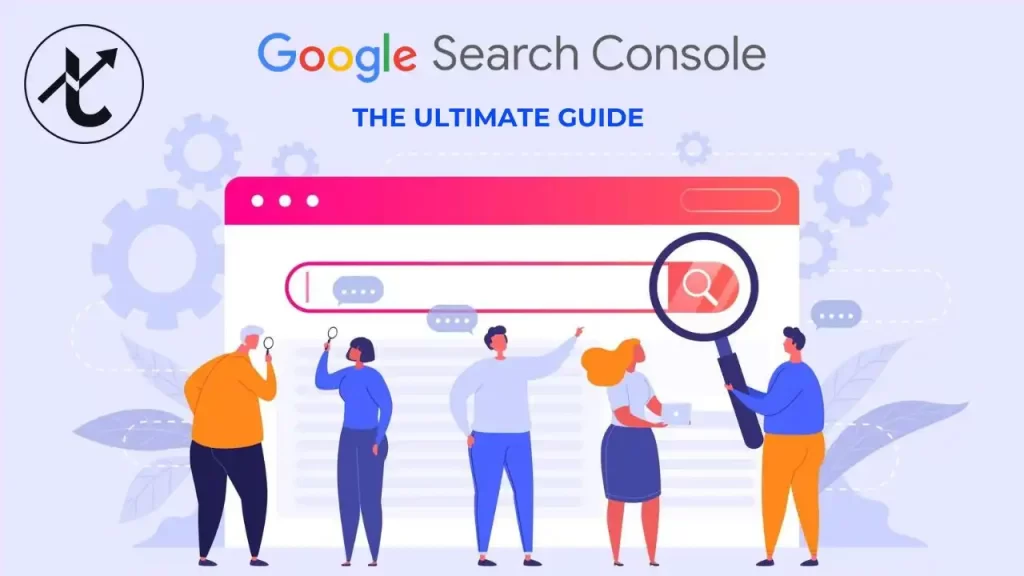Hey there, website owners and marketers! Want to get your site to the top of Google in 2025? Google’s search results are getting smarter thanks to artificial intelligence, so you need an AI SEO guide to stay ahead. We’ll keep it simple, like chatting with a friend, and make sure you can easily follow along to boost your site’s visibility.
Why AI SEO Tools Are a Game-Changer
Google’s search engine is smarter than ever in 2025, thanks to AI. That’s why AI SEO tools are a must for anyone serious about ranking high. These tools help you understand what Google wants and make your website stand out. Whether it’s finding the right keywords or creating content, AI SEO tools save time and boost results.
Why use AI SEO tools? They analyze tons of data to spot patterns, suggest improvements, and even predict what your audience is searching for. Tools like Surfer SEO or Clear scope use AI to make your AI SEO guide easier to follow. They’re perfect for tackling generative AI SEO, machine learning SEO, and semantic search optimization—all key to dominating Google’s AI-powered SERP.
Understanding Generative AI SEO for Content
Generative AI SEO is all about using AI to create content that Google and users love. In 2025, tools like Jasper or Copy.ai can write blog posts, product descriptions, or even meta tags that align with Google’s AI-powered SERP. But it’s not just about writing—it’s about making content that feels natural and answers user questions.
How does generative AI SEO work? These tools use AI to:
- Write engaging headlines and intros.
- Suggest keywords based on what people search.
- Create content that matches semantic search optimization for user intent.
For example, if you’re writing about “best coffee makers,” a generative AI SEO tool might suggest including phrases like “easy to use” or “budget-friendly” because that’s what users search for. Add this to your AI SEO guide to create content that ranks higher.
Machine Learning SEO: How Google Thinks
Google uses machine learning SEO to understand what users want. In 2025, its algorithms, like RankBrain, analyze search queries to deliver the best results. This means your AI SEO guide needs to focus on how Google “thinks” to rank your site.
Here’s how machine learning SEO impacts your strategy:
- Understands user intent: Google knows if someone wants info, products, or reviews.
- Rewards quality content: Pages that answer questions clearly rank better.
- Adapts to trends: Machine learning spots new search patterns fast.
To win at machine learning SEO, create content that’s clear, helpful, and matches what users are searching for. Pair this with AI SEO tools to stay on top of Google’s AI-powered SERP.
Semantic Search Optimization for Better Rankings
Semantic search optimization is about making your content match what users mean, not just what they type. Google’s AI in 2025 is great at understanding context. For example, if someone searches “best running shoes,” Google knows they want reviews, features, or prices—not just a list of shoes.
How to nail semantic search optimization:
- Use related keywords: Include terms like “comfortable,” “durable,” or “affordable” for running shoes.
- Answer questions: Write content that addresses “how,” “why,” or “what” queries.
- Structure content: Use headings, bullet points, and tables for clarity.
- Focus on user intent: Make sure your content solves the user’s problem.
By focusing on semantic search optimization, your AI SEO guide ensures Google sees your content as relevant, boosting your spot in the AI-powered SERP.
Top AI SEO Tools to Use in 2025
Ready to supercharge your AI SEO guide? Here are the top AI SEO tools to use in 2025 for generative AI SEO, machine learning SEO, and semantic search optimization:
- Surfer SEO: Analyzes top-ranking pages and suggests keywords and content structure.
- Clear scope: Helps create content that aligns with semantic search optimization.
- Ahrefs: Great for finding keywords and tracking competitors’ machine learning SEO strategies.
- Jasper: A generative AI SEO tool for writing optimized blog posts and descriptions.
These AI SEO tools make it easy to optimize your site for Google’s AI-powered SERP. For example, Surfer SEO can show you exactly which keywords to add to rank higher. Try one or two tools to start, and watch your rankings climb.
Optimizing Content with Generative AI SEO
Creating content that ranks well is easier with generative AI SEO. These tools help you write blogs, product pages, or social posts that Google loves. In 2025, generative AI SEO is all about speed and relevance.
Tips for using generative AI SEO:
- Write for humans first: AI tools like Copy.ai can draft content, but always tweak it to sound natural.
- Add keywords naturally: Use suggestions from AI SEO tools to include terms like “best” or “top-rated.”
- Optimize for snippets: Structure content to answer questions for Google’s featured snippets.
- Update old content: Use generative AI SEO to refresh outdated blogs with new keywords.
For example, a generative AI SEO tool might suggest adding “2025 trends” to a blog about tech gadgets. This aligns with semantic search optimization and boosts your AI SEO guide.
Leveraging Machine Learning SEO for Keywords
Keywords are still king, but machine learning SEO makes them smarter. Google’s AI understands synonyms, related terms, and user intent, so your AI SEO guide needs to go beyond basic keywords.
How to use machine learning SEO for keywords:
- Find long-tail keywords: Use AI SEO tools like Ahrefs to find phrases like “best budget smartphones 2025.”
- Group related terms: Include synonyms like “cheap,” “affordable,” or “inexpensive.”
- Analyze competitors: See what keywords top-ranking sites use.
- Update regularly: Machine learning spots new trends, so refresh your keywords monthly.
By focusing on machine learning SEO, you’ll pick keywords that align with Google’s AI-powered SERP and semantic search optimization, giving your site a ranking boost.
Mastering Semantic Search Optimization for User Intent
User intent is the heart of semantic search optimization. In 2025, Google’s AI is laser-focused on what users want when they search. Your AI SEO guide should help you create content that answers their questions perfectly.
Steps for semantic search optimization:
- Understand intent types: Informational (e.g., “how to”), navigational (e.g., “Nike website”), or transactional (e.g., “buy shoes”).
- Use question-based content: Answer “what is,” “how to,” or “why” queries in your blogs.
- Add FAQs: Include a FAQ section to cover related questions.
- Optimize for voice search: Use natural phrases like “best coffee near me” for voice queries.
For example, a blog about “healthy recipes” should answer “how to cook healthy meals” and include related terms like “quick” or “easy.” This ties into machine learning SEO and boosts your AI SEO guide.
Tracking AI SEO Tools Performance
To make sure your AI SEO tools are working, you need to track results. In 2025, monitoring your AI SEO guide efforts helps you see what’s boosting your Google AI-powered SERP rankings.
How to track AI SEO tools performance:
- Use Google Analytics: Check traffic, bounce rates, and time on page.
- Monitor Google Search Console: See which keywords drive clicks and impressions.
- Check tool dashboards: Platforms like SurferSEO show how your content ranks.
- Track rankings: Use Ahrefs or SEMrush to see if you’re hitting the top spots.
For example, if your generative AI SEO content ranks higher after adding suggested keywords, you’re on the right track. Adjust your machine learning SEO and semantic search optimization based on what works.
Combining Generative AI SEO and Machine Learning SEO
The ultimate AI SEO guide combines generative AI SEO and machine learning SEO for unstoppable results. In 2025, using both together helps you create content that’s optimized for Google’s AI-powered SERP and user intent.
How to combine them:
- Use generative AI for content: Write blogs or product descriptions with tools like Jasper.
- Optimize with machine learning: Use AI SEO tools like Clearscope to add keywords and structure.
- Focus on semantic search: Ensure content answers user questions clearly.
- Test and tweak: Use analytics to refine your approach monthly.
For example, write a blog with generative AI SEO, then use machine learning SEO to add keywords like “best laptops 2025.” This combo, paired with semantic search optimization, ensures your content ranks high in Google’s AI-powered SERP.
Wrapping Up
There you have it—2025’s top 10 AI SEO guide to dominate Google’s AI-powered SERP! By using AI SEO tools, generative AI SEO, machine learning SEO, and semantic search optimization, you’ll boost your rankings and attract more visitors. Start with tools like SurferSEO or Jasper, focus on user intent, and track your results to keep improving.
Whether you’re writing blogs, optimizing keywords, or refreshing old content, this AI SEO guide has you covered. Keep it handy, and your website will shine in Google’s AI-powered SERP in 2025. Happy optimizing!




